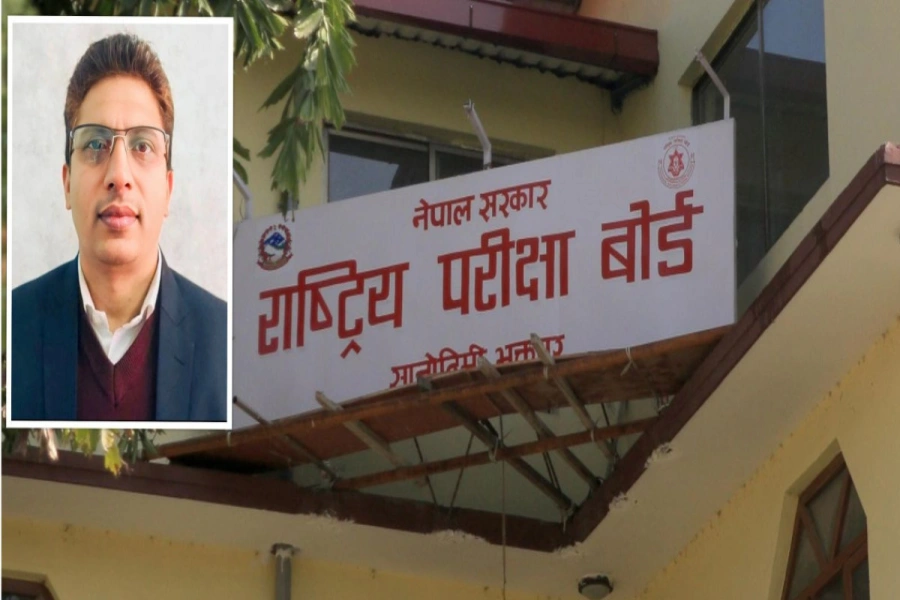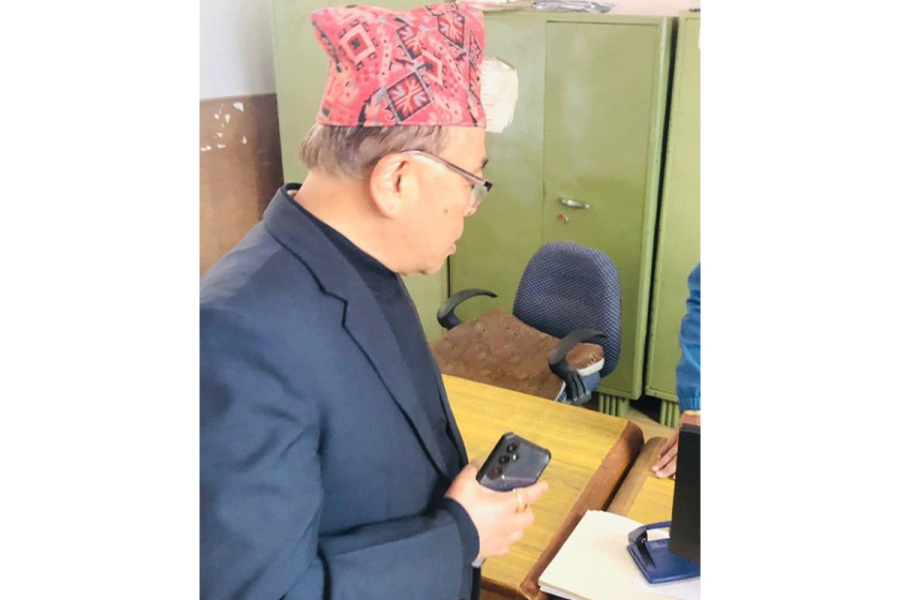No matter how much we glorify role of ICT in improving education, it cannot happen without larger participation of teachers
The bleak situation Nepal finds itself in when it comes to education was once again highlighted in Educational Standard Review Center’s report released on August 5. Bold headlines said ‘students learning achievement is on the decline.’ Yes, it’s not every day that you get to hear good news of education reform or improvement in Nepal. But perhaps it is not that bleak either.
It’s welcome news that Nepal Telecom Authority has selected different vendors to set up full-fledged IT labs in as many as 930 schools across the country. The news mentions that the idea is to set up labs with 20 computers each with a solar back up, projector for multimedia use and training to the teachers. With a projected cost of Rs 3.6 billion the government aims to give private schools a run for their money when it comes to having fully functional computer labs. Lack of hardware and infrastructure support has always been and continues to be one of the major bottlenecks when it comes to integration of ICT into education in Nepal. However, while the focus, and from a certain perspective rightly so, seems a bit too much directed toward building of infrastructure a lot is left wanting as to what we do once we have the necessary infrastructure in place.
To begin with, how do we get the teachers to overcome their anxiety of use of technology in schools? Researches from round the globe spanning over almost three decades have shown that it’s not like you install a computer in a school and everyone is using it from the next day. Rather, there are whole range of issues that need to be fixed so that these machines can generate some value to the teachers and students.
It may sound like a pretty tall claim to say that teachers have anxiety in using the computer but again studies have shown that when it comes to use of technology, education or otherwise, we all have our own set of anxieties. Perhaps that’s best explained by the fact that we still continue to have queues outside offices and banks even if a provision has already been made whereby you can pay it online. Technology acceptance is not an automatic phenomenon.
The reason behind breaking coconut on auspicious occasions

For now, let’s focus on teacher adopting new technologies.
Barriers to overcome
Multiple reasons have been identified regarding the barriers that teachers face while integrating technology in education. Of many such barriers, here are some that stand out.
Time is of utmost importance especially in the early stages of adoption of any new technology. Teachers in our public schools are perhaps some of the very few government employees who are over-worked. Each day one teacher has to do minimum of six to seven lessons leaving them with no time to learn and make themselves comfortable with the computers. As a result, even if they have the willingness to make use of computers, they really do not have time. Besides, a teacher has to teach many students. It’s pretty alarming that a teacher in Salyan has to teach as many as 117 students at one given time. It is going to be difficult anyway, with and without technology.
Teachers play an important role in making students use technology but the role of school leadership is equally important. Nepali schools, and specifically the targeted set of schools in which government wants both teachers and students to take advantage of technologies, are often remotely placed.
One of the key teachers, with experience of teaching for a substantial amount of time, is selected as the principal. The only catch here is when we select teachers on the other end of spectrum of their lives to become principals, chances are high that the person is not well-versed with the idea of technology integration in teaching learning process. As a result, he is very unlikely to encourage such integration in their day-to-day teachings.
With the rolling out of ICT in Education Master Plan 2012-1017 (a five-year plan to take information and communication technologies to all schools of Nepal) and subsequent different initiatives prior and thereafter, the role that ICT could have played has been thoroughly misplaced. With the sole aim of making a statistical impact by showing increase in the count of ICT labs across the country, very little has been done, or is being done, to look into the software side. This basically is parallel to the question ‘ok I have a car, how do I now ride it?’
A lot of time internet has been presented as a savior when it comes to integration of ICT in education. Once you have a computer and an internet connected to it, you have the world in your fingertips. That’s how mankind has been oriented. While this is partly true, there is the other larger truth—there is not much material and content available for teachers and students to connect easily.
Unproductive indulgence
The Economist published the article entitled “How the pursuit of leisure drives internet use” on June 8, which highlighted an interesting phenomenon of emergence of “Global Time Pass” economy with the newer ICT enabled devices. The key takeaway message from the article was that while the reach may have widened and crossed the boundaries, people’s indulgence in unproductive activities is on the rise especially with the use of applications like Facebook, WhatsApp or YouTube. Nepal perhaps is on the similar track. It may be that while our students and teachers also have access to decent gadgets packed with apps like Facebook or WhatsApp, there’s nothing that helps in their education or teaching learning process. Instead, all these resources are being consumed for entertainment purpose. In my recent meeting with a head of a leading internet service provider of Nepal, I was told that 83 percent of the bandwidth the company was providing is consumed by Facebook. I was not surprised.
People really do not know what to and how to search for contents over the internet and even if they manage to find relevant resources, it often is not the content one is looking for especially if the search is for course-related contents. More explicitly, if you are a typical student or a teacher studying or teaching a government prescribed curriculum, chances are very less that you will find the exact resource in the internet. This is because not many contents, barring a few developed by Open Leaning Exchange Nepal or Deerwalk Learning Center, have been developed in Nepali language targeting our students and teachers. Government has been making an effort to provide contents by developing online reading materials and video tutorials but as is the case with a lot of government initiatives, there is not much substance in them.
To sum up, one must accept the fact that no matter how much we glorify the role of ICT in improving education, it cannot happen without the larger participation of teachers.
To make this happen, we need to understand the factors which hinder teachers from integrating ICT devices.
The author is currently pursuing his PhD in Technology Management in Public Schools from Kathmandu University School of Management






































